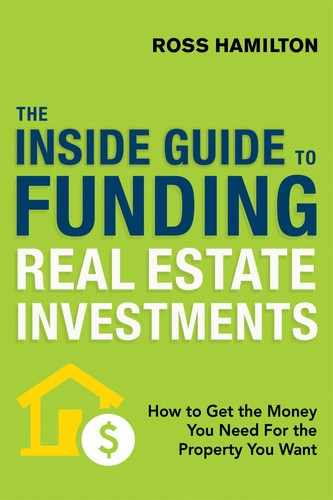WHEN YOUR LENDER TAKES THE EXIT
What happens when the mortgage lender sends you on a detour? Even the best planned trips can run into detours. The GPS is off the mark, surprise construction work pops up, and it all results in delays. On the road to real estate success, one of the biggest roadblocks is funding gone bad. What then?
When Lenders Bail
Unfortunately, real estate lenders do bail on borrowers. Sometimes there are so many contingencies, conditions, and outs in a loan commitment that there really isn’t much commitment at all. So why do they do it? As an investor, how can you anticipate that a lender may back out? What do you do if it happens to you?
Why Lenders Bail
Real estate lenders are in the business of making money by making loans. They want to minimize risk, be assured that the numbers work, and most important, they want to be repaid. Here are some of the common things that can derail your loan:
•Finding out the property’s value or condition is unacceptable
•The project details (budget issues for bringing the property up to marketable condition)
•Limited lending areas and locales
•Discovering that the borrower can’t meet the six C’s (see Chapter 12)
•Finding out the loan was priced and quoted incorrectly
•The lender’s expectations for profit margins changed, and it is no longer appealing to them
•New regulations limiting lending
•Financial and liquidity challenges
•Attempting to minimize exposure to loss
•Inability to resell the loan in the secondary market
•Discovery of new information after the loan is made
How to Recognize the Signs
Recognizing the signs that your lender is backing away is critical to investors. If you have to resort to Plan B, then it’s best to know as soon as possible. Time is always of the essence in real estate, so know your lender’s documentation needs.
Build relationships and respond quickly to lenders’ requests. Remember, they’re not asking for more documentations for fun—they’re doing it to satisfy their capital partners and government regulations. If you are working a new lender relationship, keep a keen eye on how responsive the lender is to your requests and/or application. Always ask if your loan request fits the lending criteria—not all lenders are a good match. One critical mistake new borrowers make is seeking funding from the wrong type of lender. Better to know right away. Once you’ve gotten past the initial introductions and groundwork, pay close attention to the lender and how the process is (or isn’t) progressing.
Five Signs Your Lender Is Looking for an Exit
1.Claims paperwork has been lost (repeatedly)
2.Adds new loan conditions after you’re into the process
3.Has difficult conditions that are impossible to meet
4.Changes the rate, terms, or amount of the loan
5.Ignores you (no response from your loan officer or primary contact)
What to Do
1.Clarify the issue immediately. You should have a good contact whom you can trust to give you straight answers. They might not be able to tell you the whole story, but they can definitely tell you if your experience is just standard or if you are facing a major roadblock. It’s better to save yourself the time and stress and nail down any issues right away.
2.Get an extension on your real estate purchase contract. If your lending source is looking shaky, chances are you’ve derailed your timeline for closing. You don’t want to risk your earnest money deposit, getting sued for nonperformance, or bruising your industry relationships. So request a contract extension and get it signed early. Give yourself plenty of time.
3.Apply for another loan. Talk to your other lenders. Explain the scenario. Deliver the whole loan package, complete with all the due diligence and conditions, so that you can expedite your loan application and get an answer fast. And don’t bad-mouth the lender who bailed—you’ll make yourself look like a difficult borrower.
Preventive Maintenance
I’ve already pointed out the importance of seeking the right type of lender and being prepared to get a deal closed. Lender relationships are critical, so vet your lenders. Ask for the names and locations of the last five loans they’ve closed. Get professional referrals. Work only with online sources of pre-vetted, reliable lenders.
 TAKEAWAYS
TAKEAWAYS
![]() What preventive measures should you take when your lending source is looking shaky?
What preventive measures should you take when your lending source is looking shaky?

